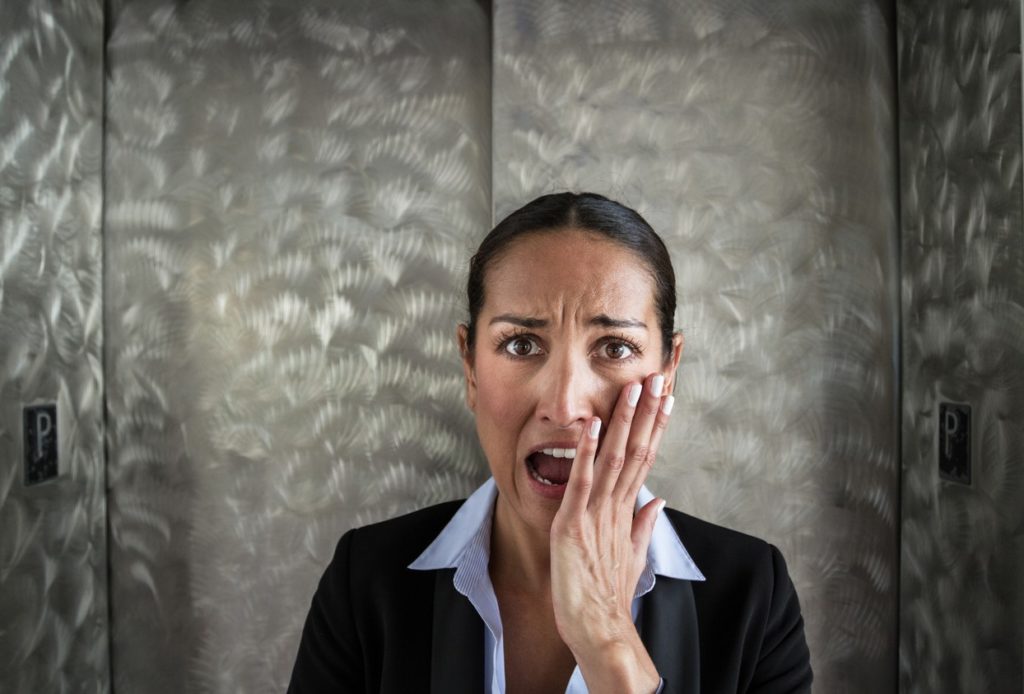Appearance is everything, and shabby shouts, “Time for a facelift!”
Careful what you stick in front of phobia. It may not mean what you think. For example, bathmophobia has nothing to do with bathing or showers. It’s the fear of stairs. People with pogonophobia don’t fear pogo sticks, but rather … bearded men (sorry about that, Santa Claus).
On the other hand, bananaphobia is real, and it means exactly what it sounds like. So, when someone tells you they have elevatorphobia, you know what they’re talking about. There’s just one tiny problem, though: Elevatorphobia doesn’t exist – as a word, that is.
This is not because psychology refuses to recognize the fear of elevators. It’s because there are two perfectly fine existing phobias that better explain the reason why people will take the stairs:
• Claustrophobia: Fear of enclosed spaces.
• Agoraphobia: Fear of being trapped.
The good news is that almost all phobias can be successfully treated and cured – even the ones like elevatorphobia, which don’t even exist. In that particular case, all you really have to do to stop people from avoiding your elevators is tackle the two underlying true phobias. This may call for an upgrade of outdated aesthetics.
Fresh outlooks
Your shabby old elevator interiors might be giving building visitors a case of claustrophobia. Experts who treat people with phobias say that one of the most successful ways to do it is simple distraction.
This may call for an elevator remodel if you have one that brings to mind a scene from The Shining. Combine clean design aesthetics with mirrors. Modern design soothes our concerns about the mechanical ability of an elevator and mirrors help give the small space a sense of depth.
Panels
You’re dealing with a small space and there’s only so much you can do to disguise that. It’s also not wise to go so far with design that people don’t even realize they’re in an elevator anymore.
Attractive panels are an elevator’s best friend. Investing in the paneling framework allows you to freshen the elevator’s interior as necessary, and it also lets you conveniently remove the scuffs and scratches that come with constant use. Panels also dampen the sounds of what’s going on outside the elevator as it moves.
Handrails
Not necessary, right? There’s no need to hold on to a handrail if your elevator is operating as it should. That may be true, but you should still consider handrails on the sidewalls among possible upgrades, and the rear wall handrail is actually required by code. Someone feeling claustrophobic in the elevator will find relief from the simple act of reaching out and holding on to the handrail. Also, rest assured that there will at least be a buffer between occupants and the mirrors or panels, resulting in less wear and tear.
Displays
How tall is a tall building? How slow is a slow elevator? That’s meant to be a rhetorical question. In the early days of elevators, engineers discovered that people actually had no idea how fast or slow they were moving. Surprisingly, they would remark on the increased speed of the elevator when they had a way of measuring the passage of time.
There might not be much you can do about the elevator’s operational display panel, but there’s no reason why you can’t install flat panel displays that offer building information, news headlines, ads, or interactive content.
Elevatorphobia doesn’t technically exist. Shabby old elevators shouldn’t either.
If you’re considering an upgrade for your antiquated elevator, contact Connections Elevator. We can guide you through the process of choosing aesthetic upgrades that make sense while also making your elevators easier to maintain.
